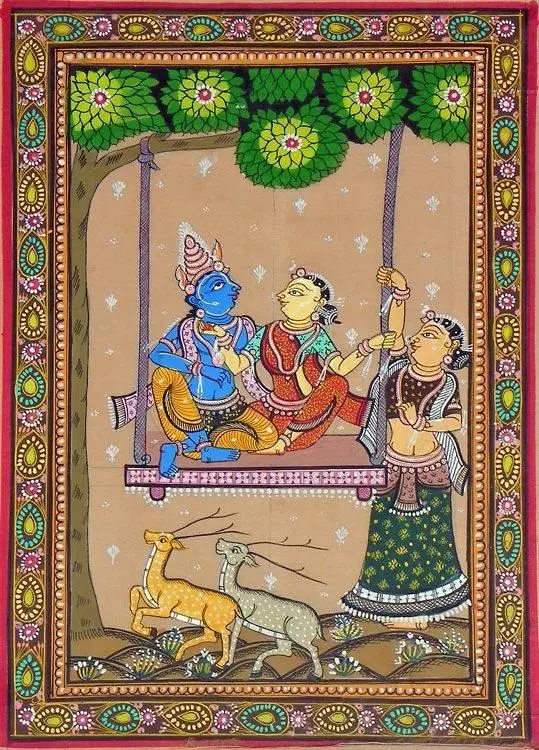Patta Chitra
Patta Chitra is a traditional art form that has been passed down through generations in the state of Odisha, India. The term ‘patta’ refers to the canvas or cloth on which the art is created, while ‘chitra’ means painting. The art form is known for its intricate details, vibrant colors, and rich cultural significance. In this article, we will explore the history, technique, and significance of Patta Chitra.
History of Patta Chitra
Patta Chitra has been a part of Odisha’s cultural heritage for centuries. It is believed that the art form originated in the temple town of Puri, where the Jagannath Temple attracts thousands of devotees every year. The artists who created the Patta Chitra were known as ‘chitrakars,’ and they were believed to be descendants of Lord Vishwakarma, the Hindu god of architecture.
In the early days, Patta Chitra was used to depict scenes from Hindu mythology, such as the Ramayana and Mahabharata. Over time, the art form evolved to include social and cultural themes, such as village life and nature.
Technique of Patta Chitra
The Patta Chitra is created using natural materials, such as cloth, chalk, and vegetable dyes. The canvas is first prepared by applying a mixture of chalk and gum, which is then rubbed with a smooth stone to create a smooth surface. The artist then sketches the design on the canvas using charcoal or pencil.
Once the sketch is complete, the artist applies vegetable dyes to bring the painting to life. The dyes are made from natural materials, such as flowers, leaves, and barks of trees. The colors are mixed with water and applied to the canvas using a brush made from the hair of a squirrel.
Significance of Patta Chitra
Patta Chitra has a rich cultural significance in Odisha. The paintings are used in festivals and religious ceremonies to tell stories and convey moral lessons. They are also popular souvenirs for tourists visiting the state.
The art form has also played an important role in the economic and social development of the state. Many families in the villages of Odisha rely on Patta Chitra for their livelihood. They create the paintings and sell them to tourists or at local markets.
Conclusion
Patta Chitra is a beautiful and unique art form that has been a part of Odisha’s cultural heritage for centuries. The intricate details, vibrant colors, and rich cultural significance make it a valuable contribution to India’s diverse artistic traditions. By supporting and preserving Patta Chitra, we can ensure that this beautiful art form continues to inspire future generations.

